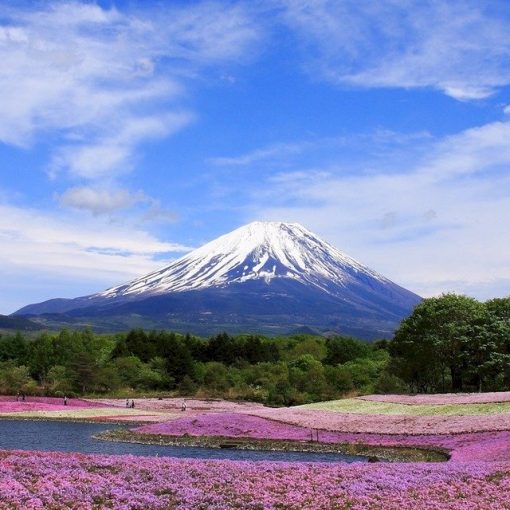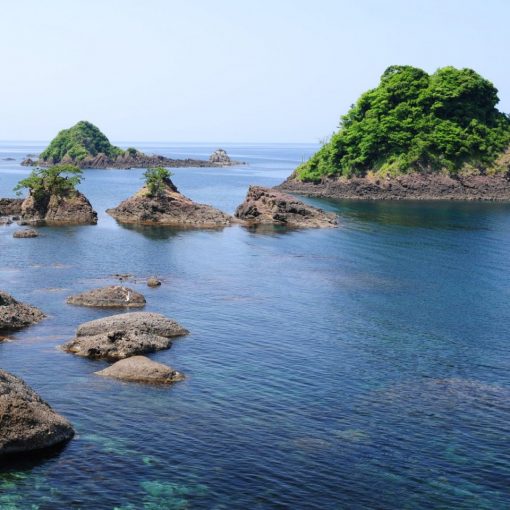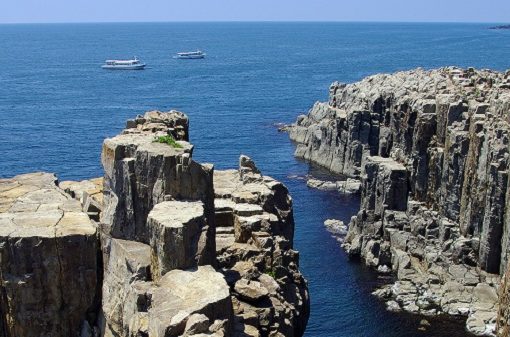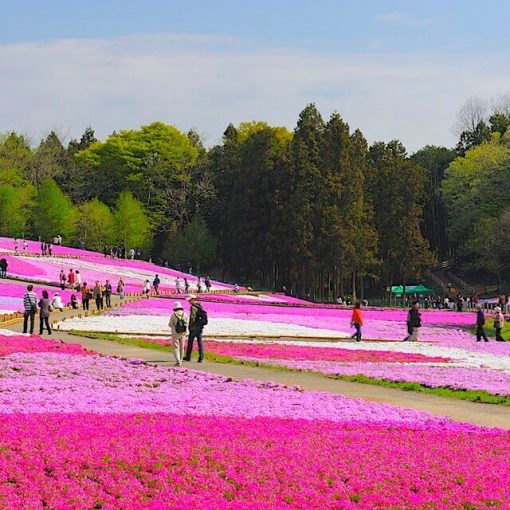The Japanese often compare Kyushu, the third largest of Japan’s four main islands, to the fertile Mediterranean coast, the cradle of European civilization. There are as many citrus orchards in Kyushu as in Portugal, Spain, Italy, Greece. The sea is the same azure and clear, and the climate is also mild and pleasant. An excellent example is Kagoshima Prefecture. It is located at the southern tip of Kyushu. Most of the prefecture is divided by a bay that is flanked on the west by the Satsuma Peninsula and on the east by the Osumi Peninsula.
In the center of the bay, on the island rises the Sakurajima volcano, whose name translates as “Sakura Island”. It smokes constantly and has erupted several times. Its largest eruption occurred in 1914. Then so much lava poured out of the bowels of the mountain that a half-kilometer strait 400 m deep was blocked by an isthmus 72 m wide. Thus, the island became a peninsula. The flowed lava is black and lifeless, and covered with gray ash on top, it resembles the lunar surface rather than the earth’s surface.

The Sakurajima volcano
The Sakurajima volcano has become the hallmark of the prefecture. It is as famous as the Italian Vesuvius, which is why the city of Kagoshima is often called Japan’s Naples. It is the volcano that is one of the most attractive places for tourists, whose number annually exceeds 40 million people.
There is a village on the slopes of the volcano. Local residents are mainly engaged in vegetable growing, as the land flavored with ashes is very fertile. People accustomed to living here are not afraid of either the smell of burning, or sirasu – light gray volcanic ash, constantly present in the air, or the threat that the volcano will resume its activity. Despite the fact that the volcano is active, the peasants do not want to leave here.
And the administrative center of the prefecture – Kagoshima, located on the opposite shore of the bay – is often covered with clouds of ash. In ancient times, it was the castle town of Satsuma Province. Under the rule of the Shimazu clan, Kagoshima became the political, financial, cultural and transportation center of Southern Kyushu. It was thanks to Kagoshima that Japan became acquainted with Europe. In 1549, Francis Xavier, a Spanish Jesuit, arrived here and opened the first Christian mission in Japan.
Taking advantage of its favorable geographical position, Kagoshima managed to establish contacts not only with Europeans, but also with the countries of Southeast Asia, so the prefecture served as the southern gateway to Japan. One result of this was the accumulation of wealth in such quantities that Kagoshima (then Satsuma Province), which acted as a separate principality, sent far more exhibits to the World Exhibition in Paris in 1867 than all of Japan.
Natives of this prefecture – Saigo Takamori and Okubo Toshimiti – were one of the ideologists of the bourgeois Meiji Restoration in 1868 and played an important role in the destruction of the feudal system in the country.
Nevertheless, Kagoshima remained the backyard of the country for a long time. Affected remoteness from the capital. Only in the post-war years life here revived.
Tourists coming here are attracted not only by historical sights, but also by the resort delights of the prefecture. These include the sand dunes of Fukiage Beach, stretching for 30 kilometers on the western coast of the Satsuma Peninsula. Here in the city of Kaseda, the annual Sand Festival is held, which attracts many sculptors to build sand figures.
Yakushima Island

Yakushima Island is located 130 km south of Kyushu, but administratively it is part of Kagoshima Prefecture. The area of the island is relatively small – just over 500 square meters. km, however, when it comes to something very, very, he can safely take the lead. In 1993, Yakushima became the first area in Japan to be listed as a UNESCO World Heritage Site. The island was honored with such honors for the picturesque and rather high mountains of Miyanoura (1936 m) and Nagata (1886 m), which the Japanese poetically called the Soaring Alps, sandy beaches and amazingly beautiful cryptomeria forests. Here grows a tree of cryptomeria, whose age is more than 72 centuries. It is called Jomon sugi, which means “cryptomeria of the Jomon era” (10,000-300 BC).
There are also many interesting and picturesque places in the north of the prefecture. The city of Izumi is famous for the cranes that come here every year for the winter. According to some estimates, about ten thousand of these graceful birds live here during the season. The area is also famous for its hot springs.
Most of the lakes in the prefecture formed in the craters of former volcanoes. The most famous among them is Ikeda – 15 km in circumference and 233 m deep. It is the largest in Kyushu. The lake is located in the southern part of the Satsuma Peninsula. According to legend, the monster Issi lives in the lake, but no one has seen him. Lake Ikeda is famous for its giant eels, some of which reach one and a half meters in length.




